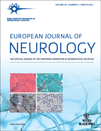Botulinum toxin improves dysphagia associated with multiple sclerosis
Abstract
Objective: To evaluate the efficacy of botulinum neurotoxin type A (BoNT/A) for severe oro-pharyngeal dysphagia associated with multiple sclerosis (MS).
Patients and methods: BoNT/A was injected percutaneously into the hyperactive cricopharyngeal muscle of 14 dysphagic MS patients under electromyographic control. Patients were evaluated by videofluoroscopic and electromyographic examinations and by the Penetration/Aspiration Scale (PAS), at week 1, 4, 12, 16, 18, and 24 after BoNT/A injection.
Results: All patients showed a significant improvement in all the swallowing outcome measures.
Conclusion: No specific treatment for oro-pharyngeal dysphagia related to MS has been described to date. Our preliminary findings suggest a potential benefit from BoNT/A treatment in MS patients with dysphagia associated with upper esophageal sphincter hyperactivity.




